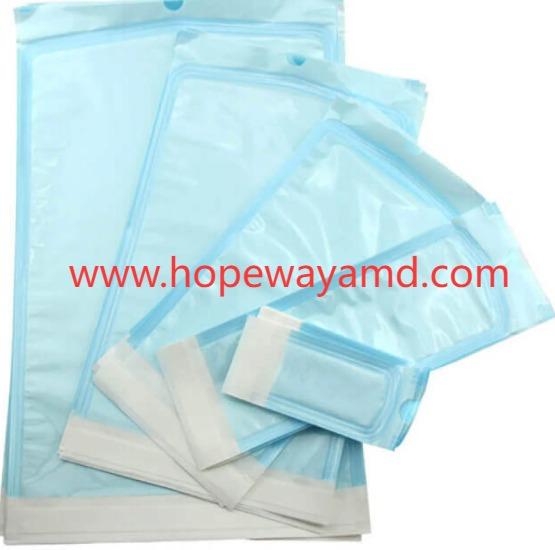Can Sterilization Self Sealing Pouch Improve Packaging Workflow?

In healthcare packaging solutions, the Sterilization Self Sealing Pouch from Hopeway AMD provides a practical option for maintaining product sterility without requiring heat-sealing equipment. Its design allows users to insert instruments or materials, remove excess air, and secure the package with an integrated adhesive strip. This simple yet effective sealing process helps reduce equipment needs and enables quick preparation of items for sterilization, making it suitable for a variety of operational settings.
The pouch typically features a dual-layer material construction: a transparent film for product visibility and a paper or breathable membrane that allows sterilization agents such as steam or ethylene oxide to penetrate effectively. After sterilization, this membrane serves as a microbial barrier, helping preserve sterility until the package is opened. The combination of transparency and protective function ensures that contents can be identified easily while remaining shielded from external contaminants.
One of the main advantages of this pouch design is its time efficiency. Because no separate sealing device is required, it can be used in settings where space, speed, or portability are important factors. Clinics, small laboratories, and mobile healthcare services can particularly benefit from the convenience of self-sealing packaging, as it minimizes preparation time and supports faster turnaround of sterilized items.
From a compliance perspective, the materials and construction of sterilization pouches are generally selected to meet recognized standards for sterile barrier systems. These standards focus on aspects such as microbial penetration resistance, seal integrity, and compatibility with common sterilization methods. The adhesive seal is engineered to maintain closure during sterilization cycles and handling, while still allowing easy opening without compromising sterility at the point of use.
Durability is another important feature. The film layer is resistant to tearing and punctures, helping to ensure that the sterile barrier is not inadvertently breached during storage or transport. This is especially important for sharp or irregularly shaped instruments, which can otherwise place stress on packaging materials.
In addition to functional benefits, self-sealing pouches can contribute to operational cost management. By reducing reliance on sealing machinery, facilities may save on equipment purchase, maintenance, and energy consumption. This makes them particularly appealing to smaller-scale operations or organizations looking to optimize resource allocation without compromising packaging quality.
The versatility of these pouches extends beyond healthcare. They can be applied in dental practices, veterinary clinics, research laboratories, and even certain industrial sectors where small tools or components require sterile handling. The ability to adapt to different sterilization methods and product types makes them a flexible solution for diverse needs.
When considering packaging options for sterilized items, factors such as workflow efficiency, material integrity, and barrier performance all play a role. A self-sealing pouch addresses these requirements in a balanced way, offering a combination of ease-of-use, compliance, and reliable protection.
If you are seeking a way to simplify sterile packaging without sacrificing quality, a resource is ready to guide your next step. Visit https://www.hopewayamd.com/ and explore how this approach could fit into your processes in ways you may not have considered before.
- Information Technology
- Office Equipment and Supplies
- Cars and Trucks
- Persons
- Books and Authors
- Tutorials
- Art
- Causes
- Crafts
- Dance
- Drinks
- Film
- Fitness
- Food
- Jogos
- Gardening
- Health
- Início
- Literature
- Music
- Networking
- Outro
- Party
- Religion
- Shopping
- Sports
- Theater
- Wellness



